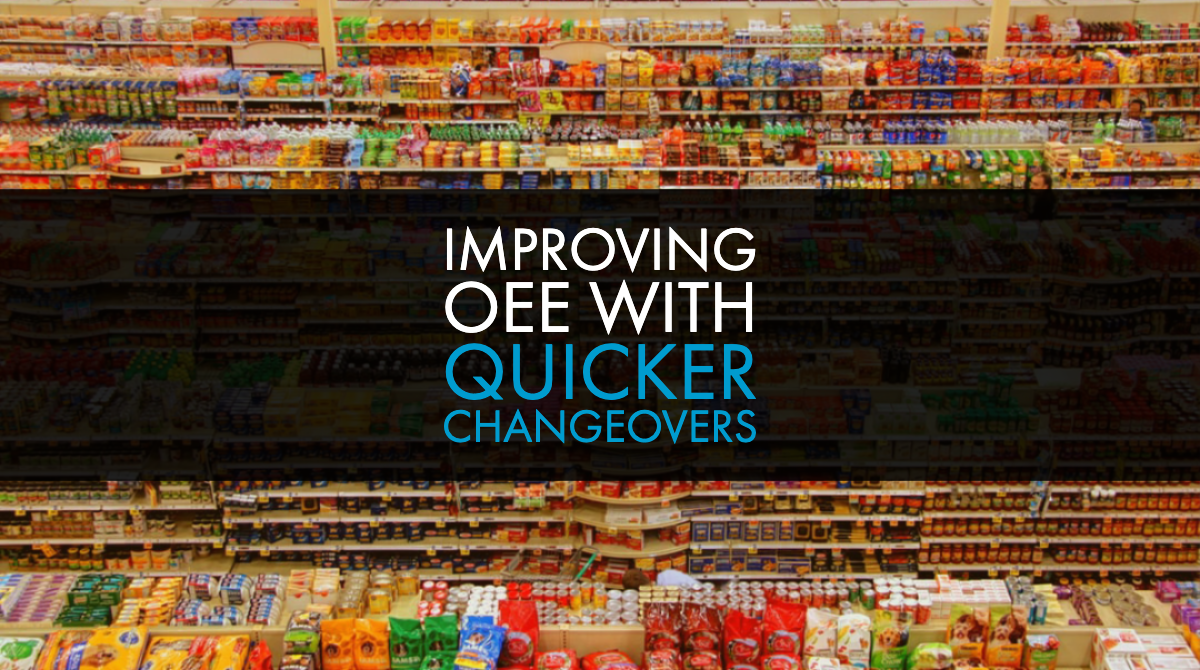Once milk was just milk. Today you'll find a dozen or more different types on grocery store shelves. The same goes for yogurt: consumers want choices and dairy producers are serving it up. There is however a price to pay for all this variety. Changing over filling, labeling and packaging lines eats into production capacity, a loss that shows up in Overall Equipment Effectiveness (OEE) metrics. More frequent changeovers: lower OEE.
Given that consumers' needs are likely to continue to diversify over time, this is a reality that Food and Beverage (F&B) manufacturers must reckon with. What they can do though is reduce the impact of more frequent changeovers by doing them quicker. Here's how technology can help.
What's Driving Increased Changeover Frequency?
Product variety is the simple answer, and not just in dairy. Whether you look at frozen foods, processed meats, bottled drinks or any other category, it's the same story. Grocery stores want to offer more choices, and consumers are grabbing them off the shelves. Given that most food manufacturers lack the space, volumes and capital to invest in dedicated filling and packaging lines, there's no choice but to do changeovers.
Other factors are at work too. Marketing departments like to change up the pack formats from time-to-time. Different shapes of bottles, 10% larger containers, sometimes for short term promotions and sometimes as permanent changes. When the package size and shape changes a line can need considerable reconfiguring. It's not just swapping out labels and cleaning lines; guides, conveyors, pick-and-place grippers and so on all need adjusting.
Then there are labels themselves. It might be the same product but if it's going to a different market, or a different retailer in the case of private label packaging, labels on lids, tops, containers and cases all need swapping out.
Adopting Best Practices
Following Toyota's lead, the auto industry adopted, “Single Minute Exchange of Dies” (SMED) to speed up tool changeovers on large presses. This entails organizing the changeover so presses stop for the least time possible, arranging the workplace so everything needed is close at hand, and distributing the work between several people. As a visual example, think of tire changes during a motor race. Most manufacturers have taken this thinking on board, to some extent. Some work groups or teams pride themselves on quick changeovers, but others are yet to get that email.
This highlights a second, related problem: changeover time variability. When the afternoon shift can change over a filling machine in twenty minutes but third shift needs an hour, that complicates production planning. Clearly, third shift needs to do whatever it is that second shift is doing - assuming they're doing it to the correct standard - but how do you make that happen?
Quite simply, you figure out what is best practice for changing over each piece of equipment, machine or line. Then you share that knowledge with the other work groups. Of course, this is easy to say but less easy to carry out, and it's where Standard Operating Procedures (SOPs) come in.
Making SOPs Available
Most manufacturers have documented working practices in SOPs. Sometimes these drill down to the level of changeover instructions. They're carefully prepared, reviewed, signed off and released. And then what? They're put in a binder that sits in a cabinet or on a shelf and only come out when there's an audit. These will not help reduce and standardize changeover times.
One step better is to keep SOPs in electronic form. This simplifies distribution of updated versions, but referring to them requires access to a PC or laptop. Some workers may be comfortable getting information this way, but it's not how most people work on the factory floor.
What's needed is a process that delivers SOPs to mobile devices as and when needed. It's how people expect to get their news today so it's easy and natural. Photos and video work well this way and make it easy to see how a changeover should be performed.
Keeping SOPs Current
Another advantage of digital SOPs delivered wirelessly is speed of updating. Say first shift finds a way of preparing cleaning solution before it's needed: with digital SOPs, that information goes straight to the other two shifts. Plus, alerts help ensure the update actually gets read, and requesting a read receipt will further confirm. Compare that with the time required to update paper work instructions that no one will ever look at.
The Training Gain
Labor turnover is a headache throughout F&B. New people come in and need to be brought up to speed quickly with the expected ways of working. Many manufacturers approach this through shadowing: “Follow Jo and see what she does.” There are two problems with this. First, it sucks up some of Jo's valuable time and so may hit productivity, and OEE. Second, how do you know if Jo is following the established best practice and imparting the right knowledge on to her new team member?
Easy-to-follow digital SOPs address this problem. Plus, they avoid overloading a new hire with procedures they'll forget before they get to use them. Only when it's time to adjust the conveyor guides do they need look at the SOP for that task ie. it's considered point-of-need knowledge.
Taking the training gain further, some manufacturers are transferring tasks from maintenance technicians to production operators. This can reduce changeover time by eliminating time spent waiting for the tech to arrive, but it's essential, for safety and equipment protection, that the correct procedures be followed. Again, up-to-date digital SOPs provide the answer.
The OEE Impact
Changeovers eat into equipment availability but they are unavoidable. However, perform them faster and the OEE hit is smaller. The key is to standardize the process, so each team or group does the changeover the same way. Then look for improvements. Once tested and proven, roll these out through digital SOPs. You’ll reduce nonproductive time and OEE will rise.
To start digitalizing your SOPs to provide point-of-need knowledge to your team, contact us today.






Leave a comment